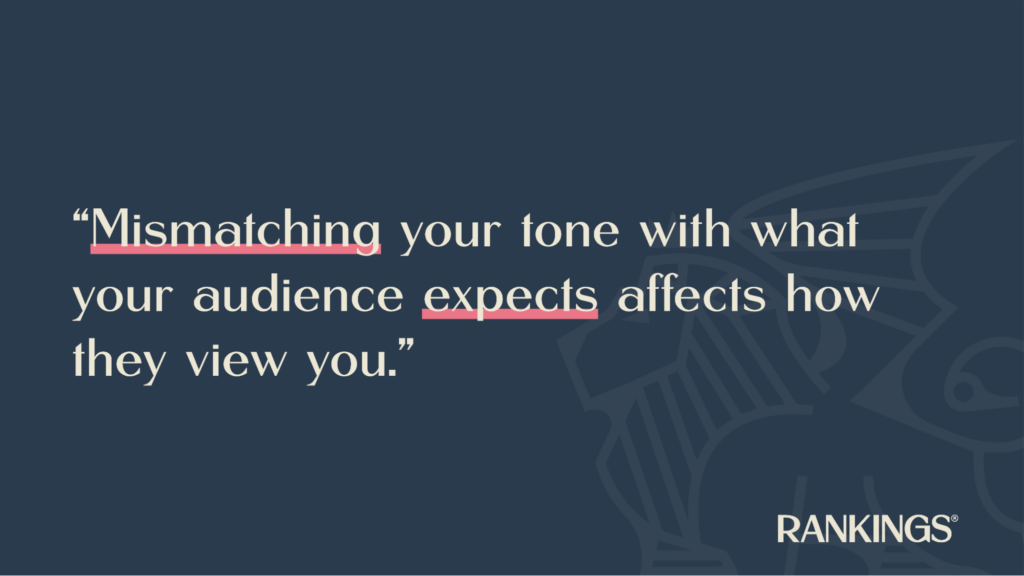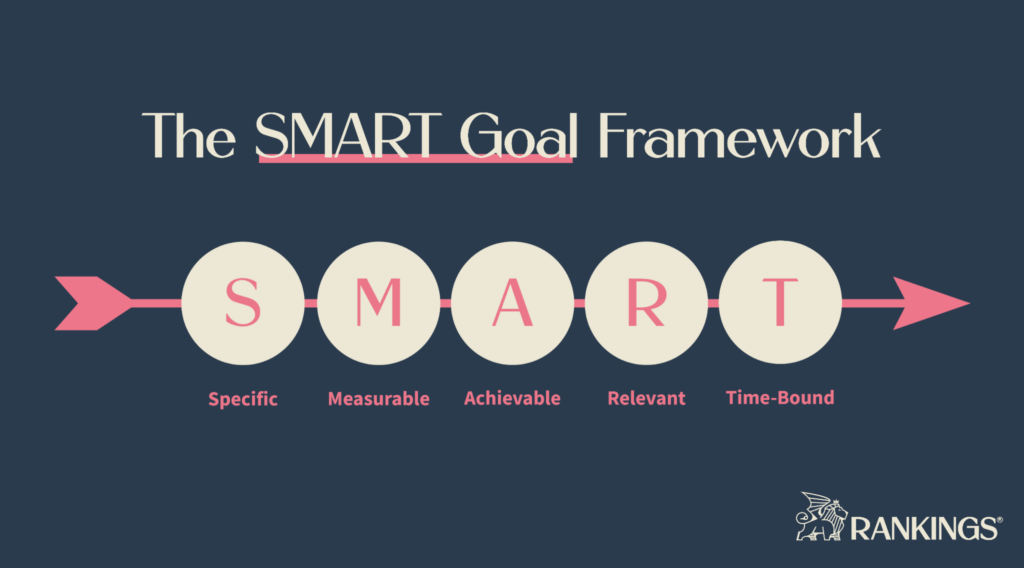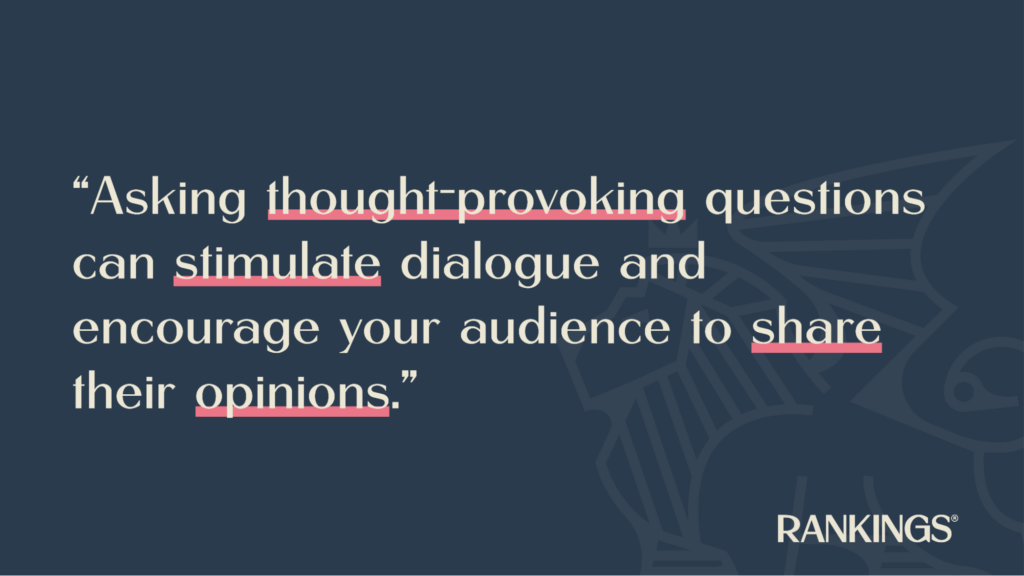Social media presents personal injury attorneys with a wealth of opportunities to expand their practice and connect with clients.
Getting started with social is a challenge, but a well-executed strategy can unlock the door to long-term success. By following actionable steps and using powerful tactics, attorneys can harness social media to transform their practice.
Important Things To Know
When you approach social media with a clear understanding of its purpose and a well-defined target audience, you’re on the path to success.
By recognizing who you want to reach and your goals, you’ll be better prepared to make the most of your online presence and reach your ideal clients.
Understanding the Purpose of Social Media for Lawyers
Marketing on social media is about your audience, not you.
Use it to showcase your expertise to your potential clients so you can build trust with them. The easiest way to do this is by sharing valuable content related to what you do that they would care about. Create content that will get people to interact with your content so they remember you when they need your help in the future.
Don’t forget that.
Social media platforms offer a cost-effective way for lawyers to advertise their services and stay connected with industry peers for networking and collaboration opportunities.
Identify Your Target Audience & Platform
One common mistake lawyers make in their social media strategy is trying to be everything to everyone across all platforms.
This approach often leads to inconsistency and diluted messaging because most lawyers just try to copy and paste their content across every platform. Failing to realize that you need to create the type of content people want to consume, and those vary from platform to platform.
This is no one likes static carousel-style posts on TikTok. It’s TikTok. People want video.
Without a full team of marketers to back you, consistently posting the right type of content across every platform is just too time-consuming.
To avoid this, focus on the one platform where your target audience is most active and where you can consistently create the type of content they want to consume.
Start by asking yourself what demographics you’re targeting and what pain points you can address. The answers will guide you in choosing the right platform and tailoring your content to your target audience.
For example, LinkedIn is an excellent choice for reaching professionals with large networks and influence. By sharing your expertise on this platform, you can attract referrals and even potential talent for your firm.
Remember, LinkedIn users value content that aids their professional development, making it a better choice for some types of lawyers.
On the other hand, Instagram and TikTok can help you reach a broader audience with fewer content constraints. Keep in mind that TikTok is a video-first platform, so if you’re not comfortable creating videos, it might not be the best choice for you.
Different social media platforms attract different kinds of users. Find out what the top performers like you are doing that resonates with their audience (they don’t have to be direct competitors).
- Where do they post content?
- What medium(s) do they use (text, image, video, etc.)?
- How often do they post content?
- What does their top-performing content all have in common?
Knowing this can help guide your own decisions and provide a foundation for your own unique and effective approach to content.
Don’t be afraid to try different types of content until you figure out what works. Just don’t try it across a bunch of different platforms.
Related Resources
- 8 Facebook Post Ideas for Lawyers
- Instagram for Lawyers: 25 Lawyers to Follow and Inspire You
- Twitter for Lawyers: 6 Tips for Lead Generation
- LinkedIn for Lawyers: 28 Steps for Building Your Brand
- TikTok for Lawyers: How to Grow Your Brand and Convert Followers into Leads
Common Mistakes Made by Lawyers
With those basics out of the way, it’s crucial to recognize common mistakes to avoid.
Addressing these pitfalls can help you streamline your approach and strengthen your law firm’s online presence.
Struggling with Being too Formal or Informal

Many lawyers struggle to find the right level of formality when they start posting on social media.
Lawyers spend a lot of time writing formal legal documents that require a certain tone of voice. Once you’re in that groove, it’s hard to break out of it. But that’s not how writing for people on social media works.
Mismatching your tone with what your audience expects affects how they view you.
Content that is too formal may come across as distant and unapproachable. An informal tone can be unprofessional and may make you look like an amateur. Strike the wrong tone and people tune out.
To find the sweet spot, personal injury attorneys need to use a conversational tone that still maintains professionalism.
Steer clear of legal jargon, opting for relatable language instead. Unless you are defining a piece of legal jargon to educate your audience, you’re better off using a simpler term. Incorporating personal stories from time to time can also help you connect with your audience.
Your target audience’s preferences also play a part in determining how formal you should be.
You can find the right balance by experimenting with your posting style. Pay attention to reactions to your posts and social media engagement metrics. When you start getting attention from the type of people you want as clients, you’re getting closer to an effective communication style for your audience.
Posting Content Inconsistently
The next mistake is not sticking with a consistent posting schedule. Posting only when you remember or have time to is a waste of your efforts. You’ll have a less engaged audience since only a few people will remember who you are when you do happen to post.
Your message needs time to sink in with your audience.
Maintaining a consistent posting schedule can lead to more potential clients and improved visibility. The more frequently they’re exposed to your content, the more familiar they’ll be with who you are and what you do.
Sticking to one social platform at first can help since you’ll only have to worry about posting there.
To further avoid falling into inconsistency, use social scheduling tools. Many social platforms have native scheduling features that allow you to add posts in bulk to post on specific dates. If that’s not enough, third-party tools like Hootsuite or Buffer may be more useful.
By scheduling your posts, you’ll have a regular flow of content even when you’re too busy to post manually.
Focusing on Selling, Not Educating
One of the biggest mistakes personal injury attorneys make on social media is concentrating on self-promotion and selling their services.
People turn to social media to connect with friends, be entertained, or learn. They don’t join social networks to be sold to. Attorneys who focus their content on their own services, achievements, and lawyer awards set themselves up for disappointment.
Lawyers who create educational or entertaining content their audience cares about will see greater success.
To improve your social media presence, should shift your focus to educating your ideal client. Create content that addresses common concerns, explains legal processes, and offers insights into the world of personal injury law. By taking this approach, attorneys can position themselves as experts in their field while creating the type of content people want to see.
Here’s a great example from Mike Rafi, a personal injury lawyer who’s active on TikTok:
@mikerafi 3 things lawyers should do for clients #lawyer #attorney #law #lawtok #personalinjury #lawsuit #case #trial #judge #jury #needalawyer #mikerafi ♬ original sound – Mike Rafi
In this video, he’s educating his audience on what a PI lawyer is supposed to do for their clients. At the same time, he’s walking the viewer through his process of representing someone. This allows him to walk his audience through his services without talking about them directly.
Steps to Launch Your Social Media Presence
With those common pitfalls in mind, you’re ready to start building your social media presence.
Following the steps below, you’ll be on your way to implementing a targeted social media strategy.
Step 1: Determine Your Social Media Goals
Defining clear social media goals is crucial for personal injury attorneys.
Setting goals allows you to focus your marketing efforts. They give you objective metrics for assessing performance. They also help you fine-tune your tactics in response to performance so you can achieve your desired outcome.
To start, outline the primary objectives for your social media marketing campaign.
For example, your goal might be generating awareness and demand with potential clients. Or it may be developing a referral network with other lawyers.

Regardless of your goal, it should follow the SMART framework. Goals that stand up to these criteria are more likely to be well-defined and actionable.
Once you have established your goals, you’ll need key performance indicators (KPIs) to track and measure your progress.
KPIs for social media can include metrics like engagement rates, follower growth, website traffic, and lead conversions. Reviewing your KPIs during your campaign allows you to make adjustments to your tactics. Doing so helps you stay on track to achieve the goals you set.
Step 2: Create a Content Strategy
A well-defined content strategy allows personal injury attorneys to consistently deliver relevant, engaging, and valuable content to their audience.
To get started, sit down over the course of a weekend and put together 40 posts that all revolve around 4-5 strong opinions you have about your field that you think your audience should know.
Once you do that, you have 40 days of content. And you can reuse them in the future by saying the same thing again but in a different way.
For example, you can change the hook (the first part of your post that catches their attention and makes them stop scrolling), the format, or the nuance of your angle. If you want to include graphics, just use Canva.
If you’re not sure what kind of graphics to make, watch this video by the team over at The Futur to get up to speed quickly.
Next, develop a content calendar to plan and schedule your social media posts.
Make sure your content strategy aligns with your social media goals and includes a mix of content types. This includes formats like text posts (without linking to your blog posts), infographics, videos, and podcasts, to cater to your audience’s preferences.
Finally, maintain a balance between promotional and educational content.
Aim for a ratio of 1:10 in favor of the educational content to build a stable following. Remember, people don’t use social media to be sold to. Bombarding them with promotional content will overwhelm them and turn them away.
By offering the kind of content they care about, you can better connect with your audience and improve the chances of them remembering you when they need help.
Step 3: Join an Accountability Cohort of Other Professionals
Joining an accountability cohort can help you stay consistent with your publishing cadence.
As our good friends over at Ship30 say, “Writing alone is hard. Writing with a community is easy.” Don’t be surprised when you make some unexpected lifelong friendships as a byproduct, either. Time and time again, we’ve heard cohort members of Ship30 say, “I came for the writing, but I stayed for the community.”
To find a community, seek out online groups, forums, or professional organizations.
Look for groups where personal injury attorneys gather to discuss social media marketing strategies, challenges, and successes. You can find groups like this on platforms like LinkedIn, Facebook, or dedicated legal forums.
Once you join an accountability cohort, stay active in discussions, share your own experiences, and provide constructive feedback to others.
Joining a cohort doesn’t just build meaningful relationships with fellow professionals. It also fosters an environment of mutual growth and learning. For best results, set up regular check-ins with your cohort to discuss progress, share insights, and maintain motivation for achieving your social media goals.
Simple Upgrades to Accelerate Growth
While you establish your social media presence, you’ll continuously refine your strategy. To accelerate your growth, you might consider some of these options.
Use Live Events to Fuel Your Content Engine
Personal injury attorneys can use live events, such as webinars, workshops, and Q&A sessions, as content sources for their social media channels.
Using content from events creates a steady stream of material to share with your audience. Turning live events into short video posts or as seeds for future content can save you time and resources. It also provides opportunities for real-time interaction with potential clients.
This can help attorneys demonstrate their expertise while learning more about their audience’s wants and needs.
To implement this strategy, start by identifying topics relevant to your audience and organize live events around those themes.
After the event, reframe the ideas you talked about into various formats. Live events can fuel content types like video clips, infographics, and text posts. Consider using event highlights to further engage your audience and as a source for new content ideas.
Don’t Fear Getting Controversial

Tackling controversial topics can help personal injury attorneys stand out from their competitors.
By presenting well-reasoned arguments and fostering open discussions, attorneys can demonstrate their thought leadership and create a strong online presence. By stepping out of the norm, you can spark meaningful conversations and encourage audience engagement.
Asking thought-provoking questions can stimulate dialogue and encourage your audience to share their opinions.
Possible controversial topics for personal injury attorneys could include:
- The impact of tort reform on personal injury cases
- The role of social media in personal injury cases
- The ethics of aggressive advertising in the legal industry
- The pros and cons of settling out of court versus going to trial
By carefully presenting your stance on controversial issues, you can create content that encourages audience interaction. At the same time, you’ll be able to showcase your expertise and approach to the law.
Partner with Other Influential People
Collaborating with well-known people in the legal industry or related fields can help personal injury attorneys grow their own social media audiences.
When you collaborate with others, you can expand your reach, enhance your credibility, and gain access to their audiences. The increased brand awareness from these partnerships can lead to new followers, new clients, and an increase in referrals.
To establish a collaboration, identify influential people who share your target audience and have complementary expertise.
Once you’ve found some potential partners, reach out to them with a collaboration proposal, such as for a legal podcast interview or to co-host a live event with you. If the partnership aligns with both of your social media goals, you have a new avenue to create fresh content for your audience.
You don’t have to limit yourself to only contacting other lawyers. Possible collaborators might include:
- Doctors
- Physical therapists
- Chiropractors
- Mental health professionals
- Insurance experts
For example, you could collaborate with a medical expert on a joint webinar discussing the impact of personal injuries on mental health. Or you could write a guest post on a popular legal website to share insights on emerging trends in personal injury law. Another idea could be collaborating with a former insurance adjuster to help your audience understand the tactics used by insurance companies after a car accident.
Best Practices Moving Forward
The simple upgrades aren’t the only thing that can elevate your marketing efforts. There are a few best practices that can help you establish and build a lasting presence on social media.
Use Social Media to Build Relationships with Potential Clients
Social media can be an effective tool for law firm marketing, but simply posting content and letting it sit isn’t enough.
You’ll see better results when you engage with your potential clients. Respond to their comments and questions on content you posted. In addition to sharing content that addresses their interests, consider asking them about the topics they would like you to talk about.
Interacting with your audience can build rapport and trust with them.
For example, if you post a TikTok video breaking down a legal concept, you may have people ask you follow-up questions. That’s a golden opportunity to help another person out and build a positive reputation with every person who comes across your response.
Stay Up-to-Date on Legal and Social Trends
Social media — and lawyers’ relationship to it — is in a constant state of change. If you want to succeed in marketing yourself on social media, you’ll need to keep track of your audience’s habits and needs. You’ll also want to stay current with the rules for advertising your law firm.
Sometimes, a new social app emerges, and people flock to it.

Think about the rapid growth of TikTok. It went from a niche app to having over 1.7 billion people on the platform in just a few years.
People moving to a new platform can be an opportunity for lawyers. It may open up new types of content that wouldn’t have worked on older services. Your audience could be more receptive to your messaging on the new platform.
It’s not just emerging apps to look out for, either.
Social media algorithms change often, and so do people’s tastes. If you find that some types of content no longer perform, it may be time to adjust your tactics.
By keeping an eye open for changes, you can decide whether you need to shift with people’s habits.
Lawyers also need to consider their ethical responsibilities on social media. While attorney advertising rules don’t change as often as social media platforms, it does happen sometimes.
Make sure that the marketing material that you put out into the world complies with your bar association’s rules. Some states have very strict rules on what they consider advertising. Knowing what those rules are ensures that your marketing efforts are both effective and ethical.
Track Your Performance and Adjust Your Tactics
Getting started with social media marketing takes some experimentation. Over time, you’ll figure out what’s working and what isn’t. Tracking your performance will allow you to get a handle on this faster than a trial-and-error approach.
If you set your KPIs at the outset, this is where they’ll come into play.
By tracking metrics like engagement rates and follower growth, you can start to assess how effective your posts are. Social media apps have built-in analytics features you can use for these data-driven insights. If that’s not enough, you can use third-party tools like Sprout Social or (on LinkedIn) Shield App.
But insights from analytics software aren’t the only tool at your disposal.
Any new clients that come to you can give you valuable insights, too. For instance, you can add a field to your contact form asking anyone who submits it how and where they found you. If you start to see a trend in people citing social media as a source, you’ll have a better idea of your actual performance.
Going over the data will show you patterns, trends, and areas of success or weakness.
Based on your findings, you can adjust your tactics. You might end up experimenting with posting frequency, adjust audience targeting, or even cut out certain types of content. By keeping up with the data and making adjustments, your marketing efforts will become more effective over time.
Elevate Your Personal Injury Practice through Social Media Mastery
Embracing social media is essential for personal injury attorneys looking to connect with their audience and grow their practice.
By finding your target audience, being consistent, and focusing on educating rather than selling, you can build an audience of potential clients. By understanding common mistakes, you can avoid the pitfalls many attorneys fall into. Using the simple upgrades above, you can level up your practice’s outcomes.
Success in social media marketing comes from persistence, continuous learning, and adaptation. With dedication and the right approach, your personal injury practice can create a steady stream of new clients.
The post Social Media for Lawyers: The No-Nonsense Crash Course appeared first on Rankings.




